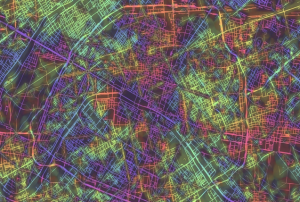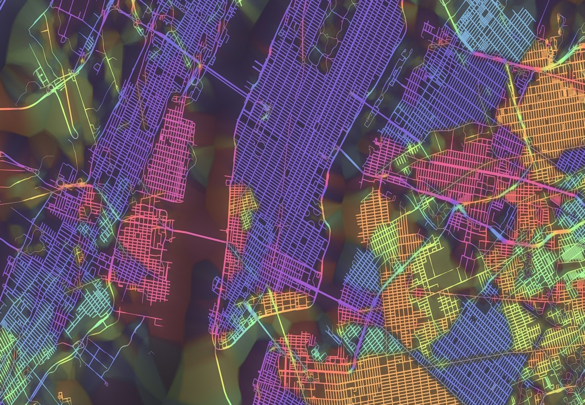 Many have said that we need a map of the innovation environment at Johns Hopkins. The request is based on a laudable goal—to educate faculty about
Many have said that we need a map of the innovation environment at Johns Hopkins. The request is based on a laudable goal—to educate faculty about
their institutional resources. But in my
opinion, a map is not the right tool. Innovation, by its very nature, is changing constantly. A road is paved as each new idea moves towards implementation of a product, process or other tangible development. An innovation map would look more like a dynamic complex grid, with new nodes and connections emerging daily.
In an attempt to avoid brain overload and understand our resources, let’s envision a more functional map of our “living” innovation ecosystem. In my  mind, it looks like a street map crayon-colorized to highlight functional directions. Consider examples of Paris and New York in insets; you can see the
mind, it looks like a street map crayon-colorized to highlight functional directions. Consider examples of Paris and New York in insets; you can see the
complex connections up-close and understand organization in the overall structure from far away. Our innovation ecosystem is getting more complex over time, perhaps akin to the increasing complexity observed in old Paris (top) compared to New York (bottom).
As a resource, the below document highlights the JHU offices, institutes, centers and programs that form our innovation ecosystem. Help me keep it a living document: corrections, updates and additions are welcome ([email protected]).
The JHU Innovation Ecosystem 5_6: https://medicine-matters.blogs.hopkinsmedicine.org/files/2016/05/The-JHU-Innovation-Ecosystem-5_6.pdf
Think off the grid. See value and resource not yet on the map.
-Kieren Marr, Associate Vice Chair for Innovation and Commercialization (InCMed)
